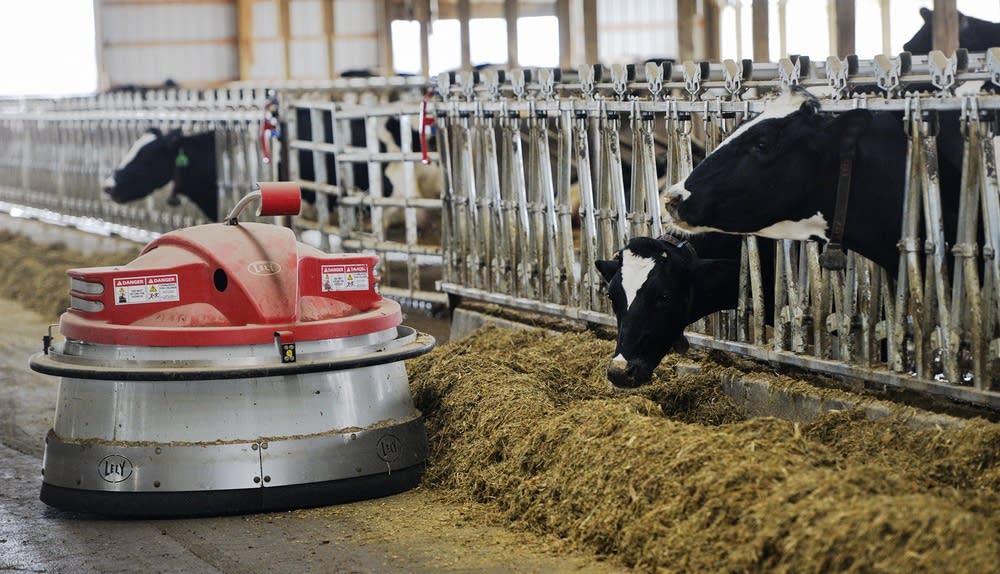
Technology has taken a leap in the past few years, especially in new agricultural practices. In the dairy industry specifically, we see the new technology and automation being used for feeding and milking, which has developed into a more common practice recently.
What happens in a robotic dairy?

Feed being pushed up to the bunk to minimize waste
Think of a robotic dairy as an automated way for the cows to eat, drink, and be milked on their own schedule, instead of the schedule of the workers. On the feeding side, computer formulated diets are automatically given to the cows- and when it gets messy, the robots can also sweep the bunks to minimize feed waste.
On the other side of production, the cows are able to walk up to a robotic milking machine to be milked, whenever they want to. These machines can also function to give feed or supplements to the cows, as well as track body weight, milk yield, temperature, and more to help with health and wellness tracking. With sensors, milking cups attach to the teats of the cow from underneath, after sanitation to minimize mastitis. The robot then continues to milk the cow until finished, detaches from the cow, and she is free to go from the machine.
What are the benefits?
There are countless benefits to a voluntary, robotic milking system for a dairy production facility. In addition to decreased feed waste due to the bunks being cleaned regularly, overall facilities can be better maintained for good herd health, such as cleaned alleyways. Also in regards to health, the milking machine individually sanitizes each cow’s udders, to prevent disease spread.

Robotic milking system
Cow stress is decreased, as they are able to voluntarily be milked when they need and want to. There’s no schedule of milking each cow at a certain time, and this decrease in stress leads to higher milk yields.
Bob Larson, a dairy producer and SASE customer in Creston, Nebraska, highlights some of the major benefits of adding robotic milking machines to his facility. He says “One of the things that we really like about the robotic dairy is that we have more of a flexible schedule. The work still has to be done, but it is not on such a strict time schedule. We can attend different activities and do the chores at a later time.”
Larson also states that the data they can get from each individual cow helps with decision making for herd management. Another benefit they see in the future at their facility is the ability to individually feed cows their own formulated diets, while also treating on an individual basis. By doing this, they can decrease costs of treating whole pens of cows and personalize feeding and treatment plans.
Contact us today for more information on robotic dairy facilities, or check out our projects page for other facilities.
